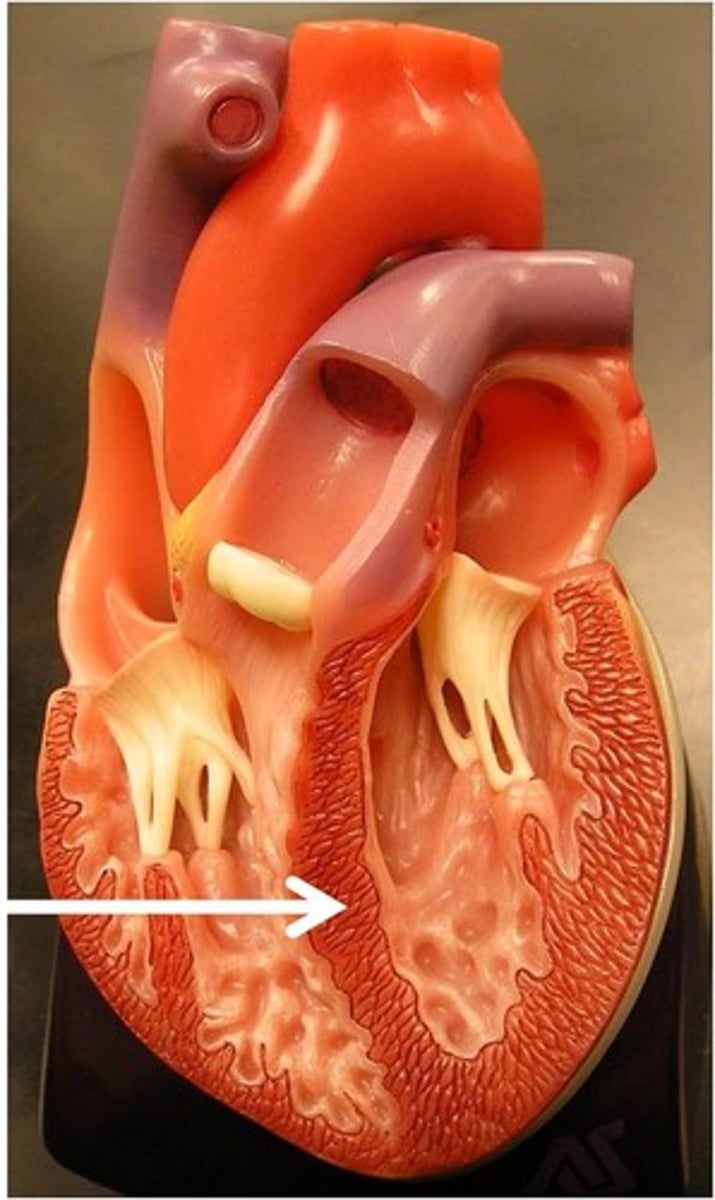Heart Anatomy
1/23
There's no tags or description
Looks like no tags are added yet.
Name | Mastery | Learn | Test | Matching | Spaced |
|---|
No study sessions yet.
24 Terms
cardiology
The study of the heart and its action and diseases.
heart
A hollow, muscular organ that pumps blood throughout the body.
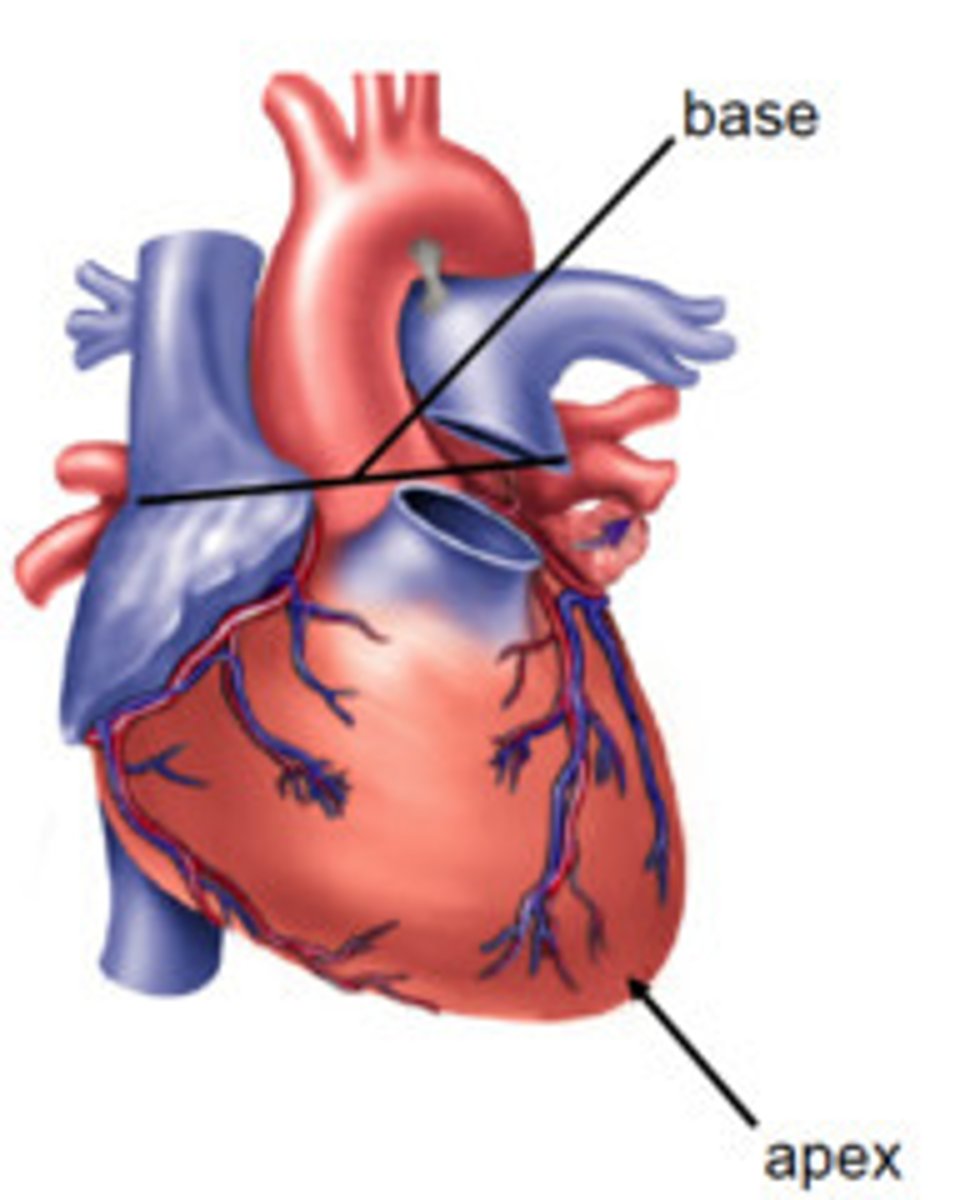
Atria (plural of atrium)
the two upper chambers of the heart and is divided by an internal septum. they are the receiving chambers
ventricles
The two lower chambers of the heart which force blood out of the heart and into arteries.
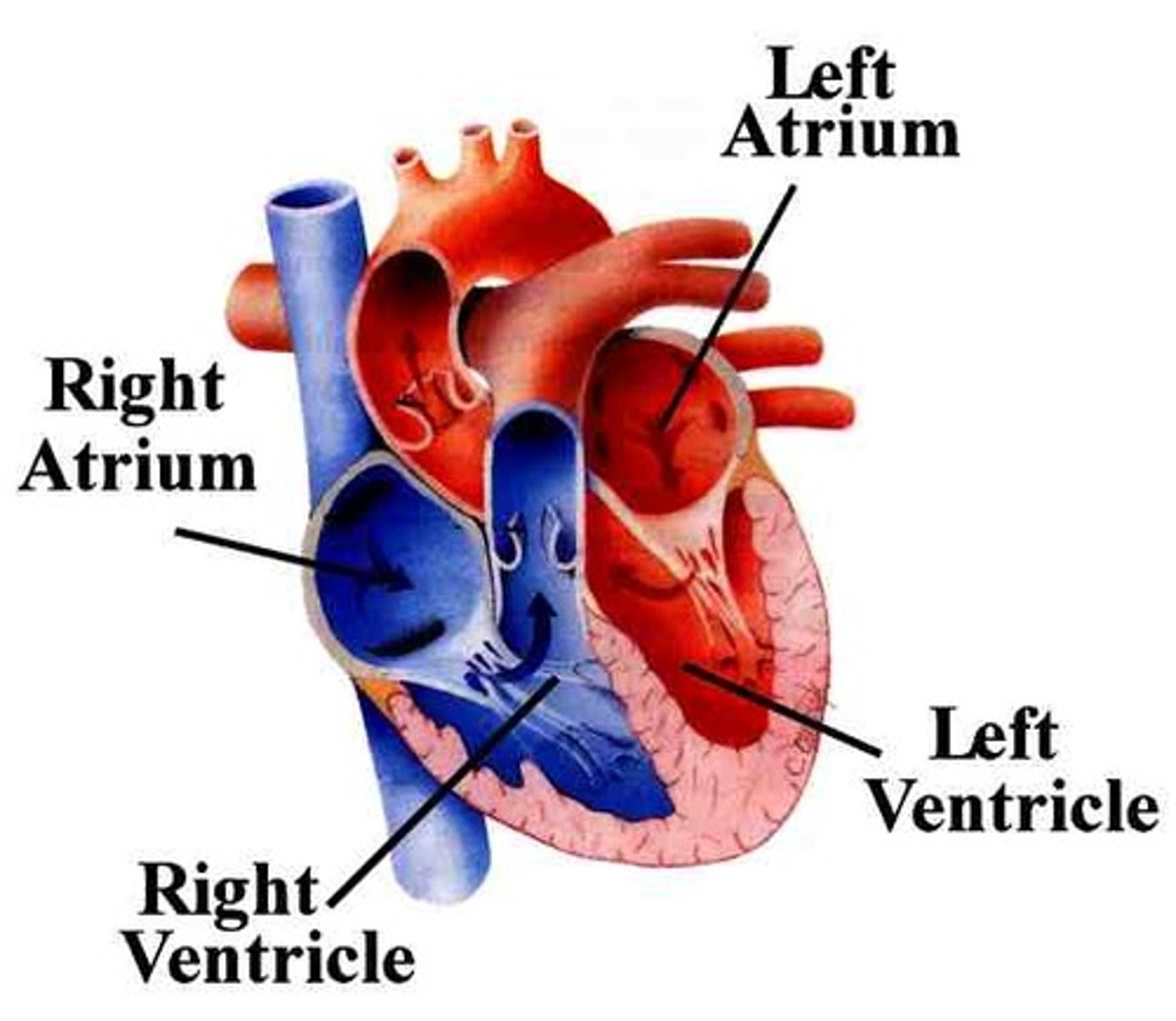
deoxygenated blood
blood that is oxygen-poor, in diagram the parts in blue
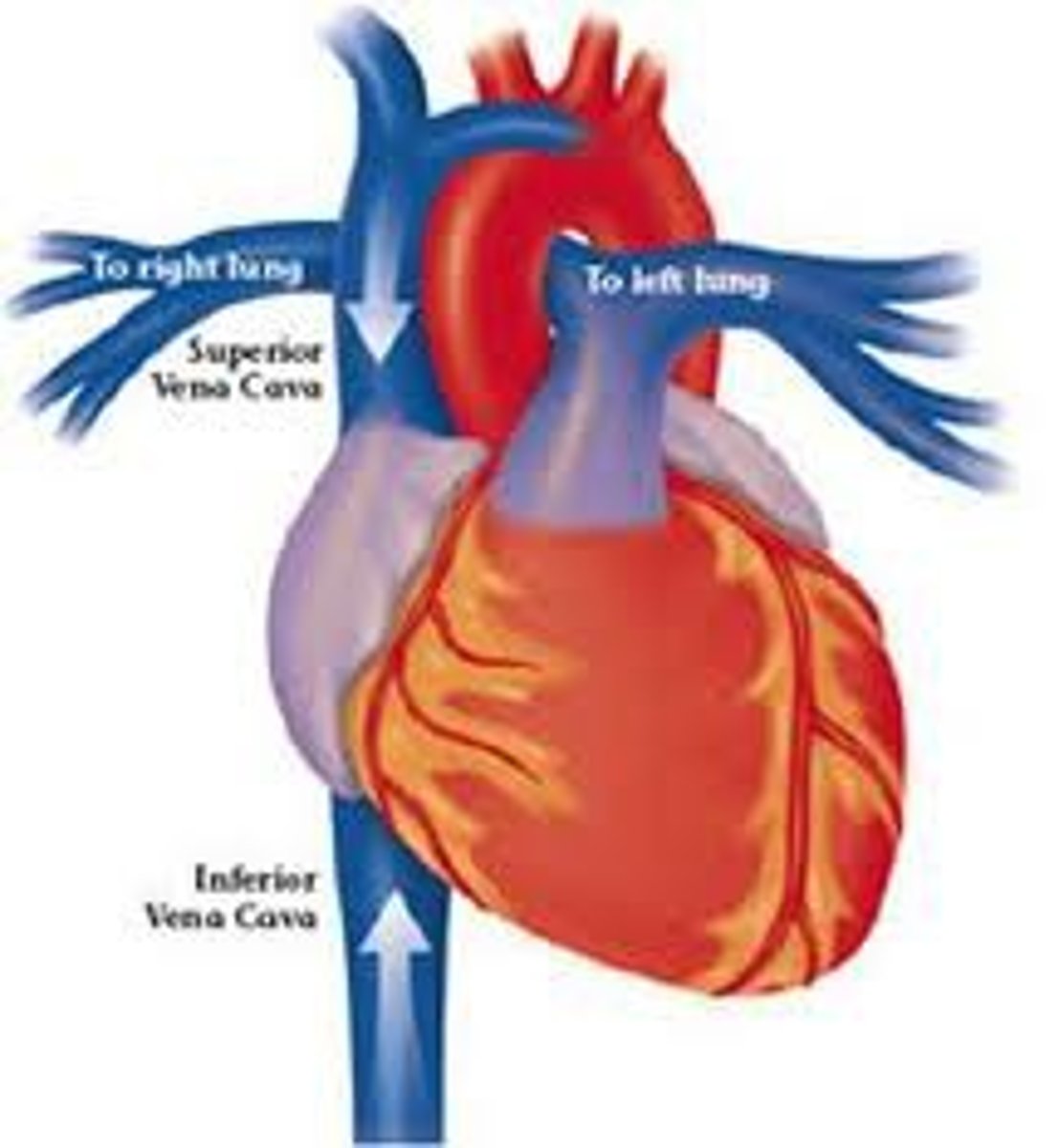
Oxygenated blood
Blood rich in oxygen and nutrients, in diagrams shown as red
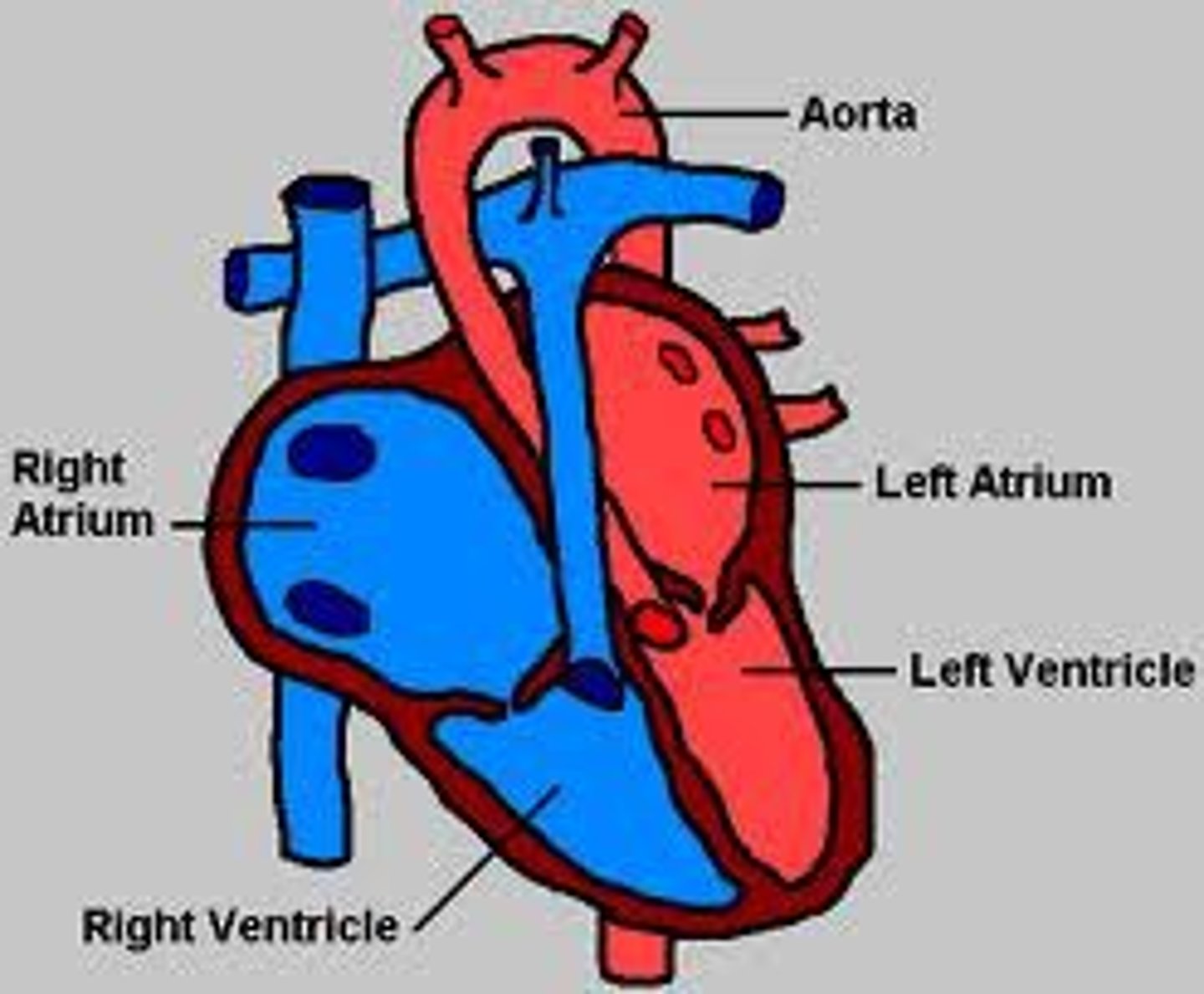
veins
blood vessels that carry blood back to the heart. All veins, with the exception of the pulmonary veins, carry blood containing carbon dioxide and other waste products. The pulmonary veins carry oxygenated blood from the lungs to the heart.
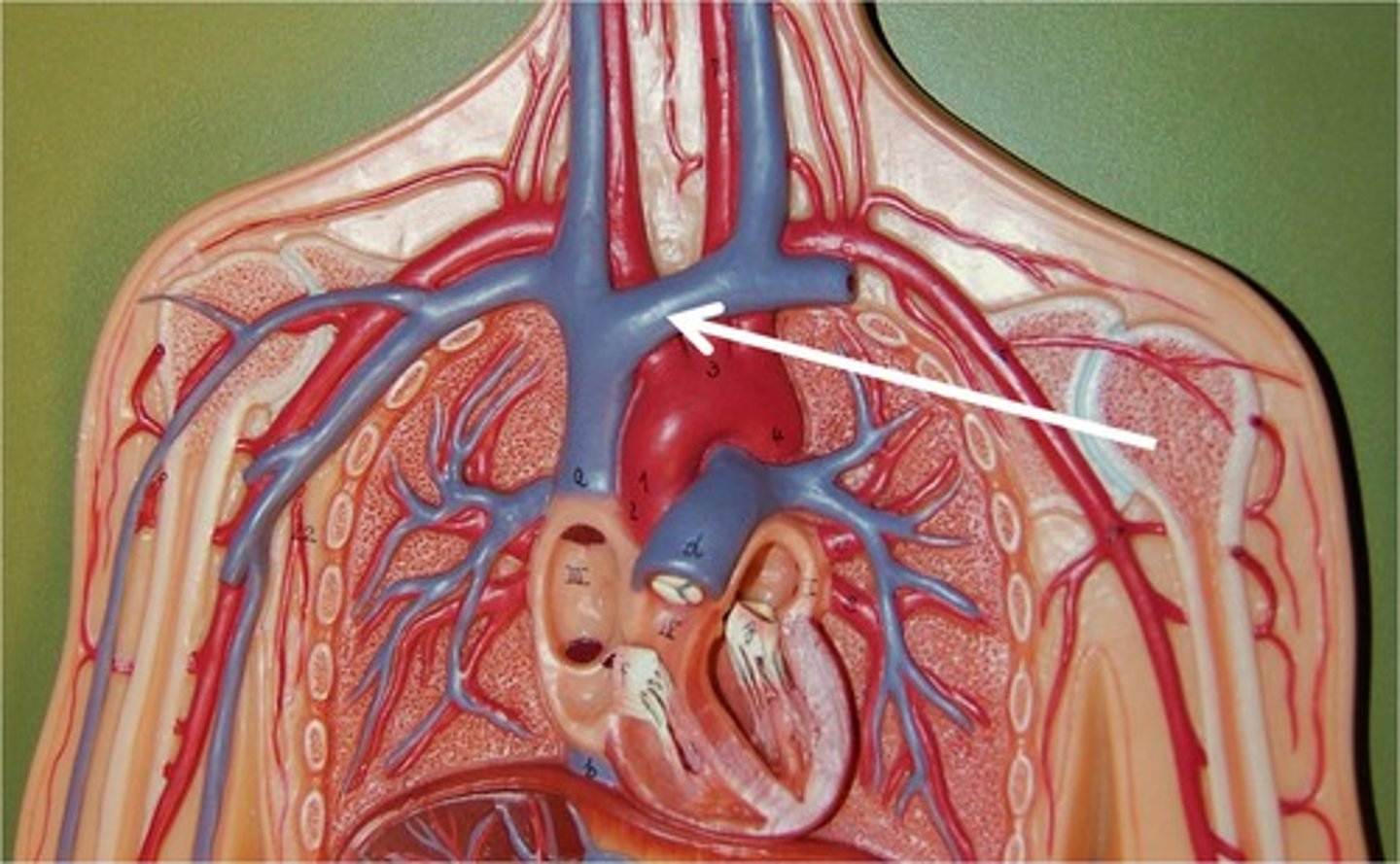
Arteries (memory trick=arteries away from heart)
blood vessels that carry oxygenated blood away from the heart, EXCEPT for the pulmonary arteries which carries deoxygenated blood to the lungs
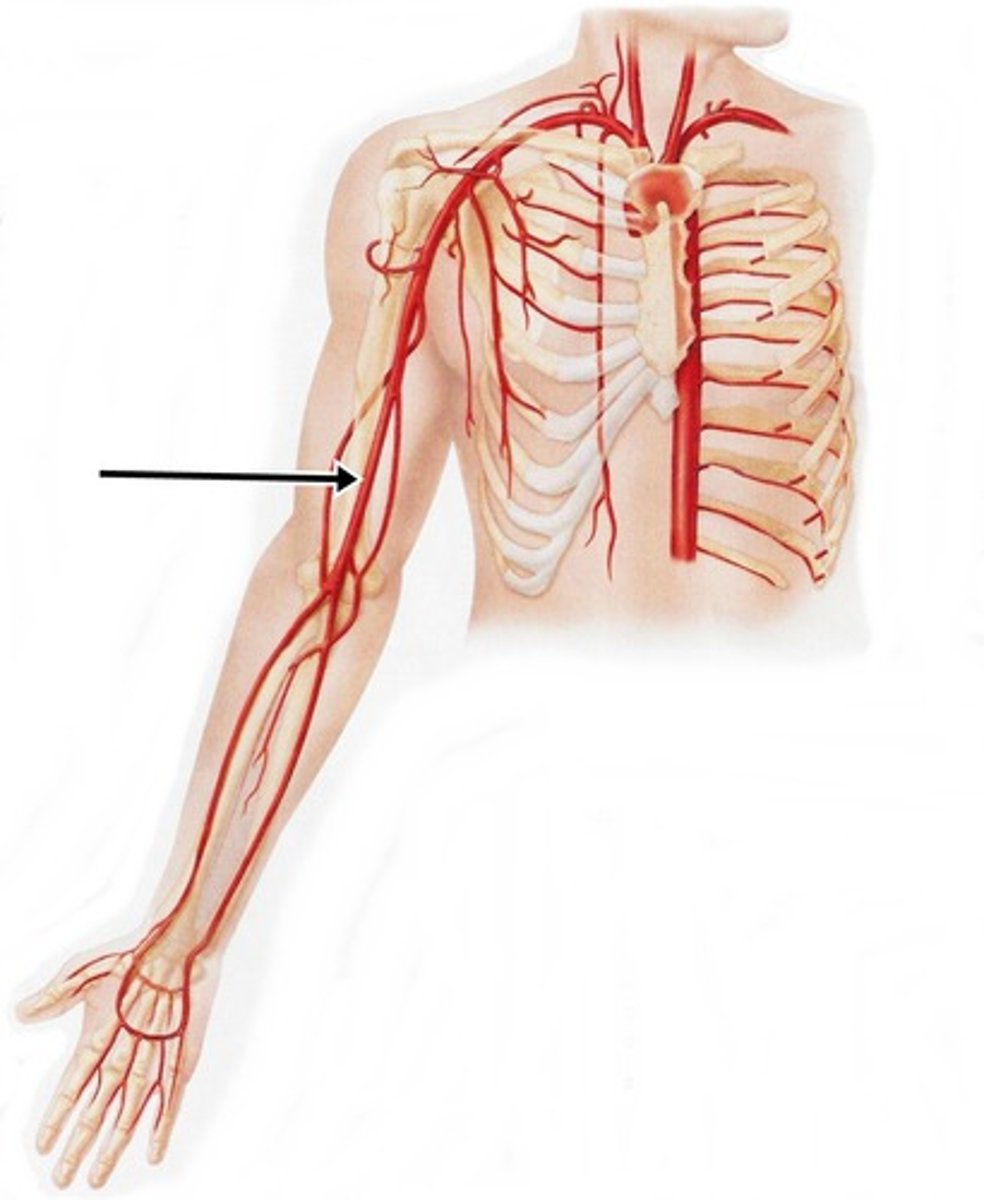
superior vena cava
receives blood from the head and arms and chest and empties into the right atrium of the heart
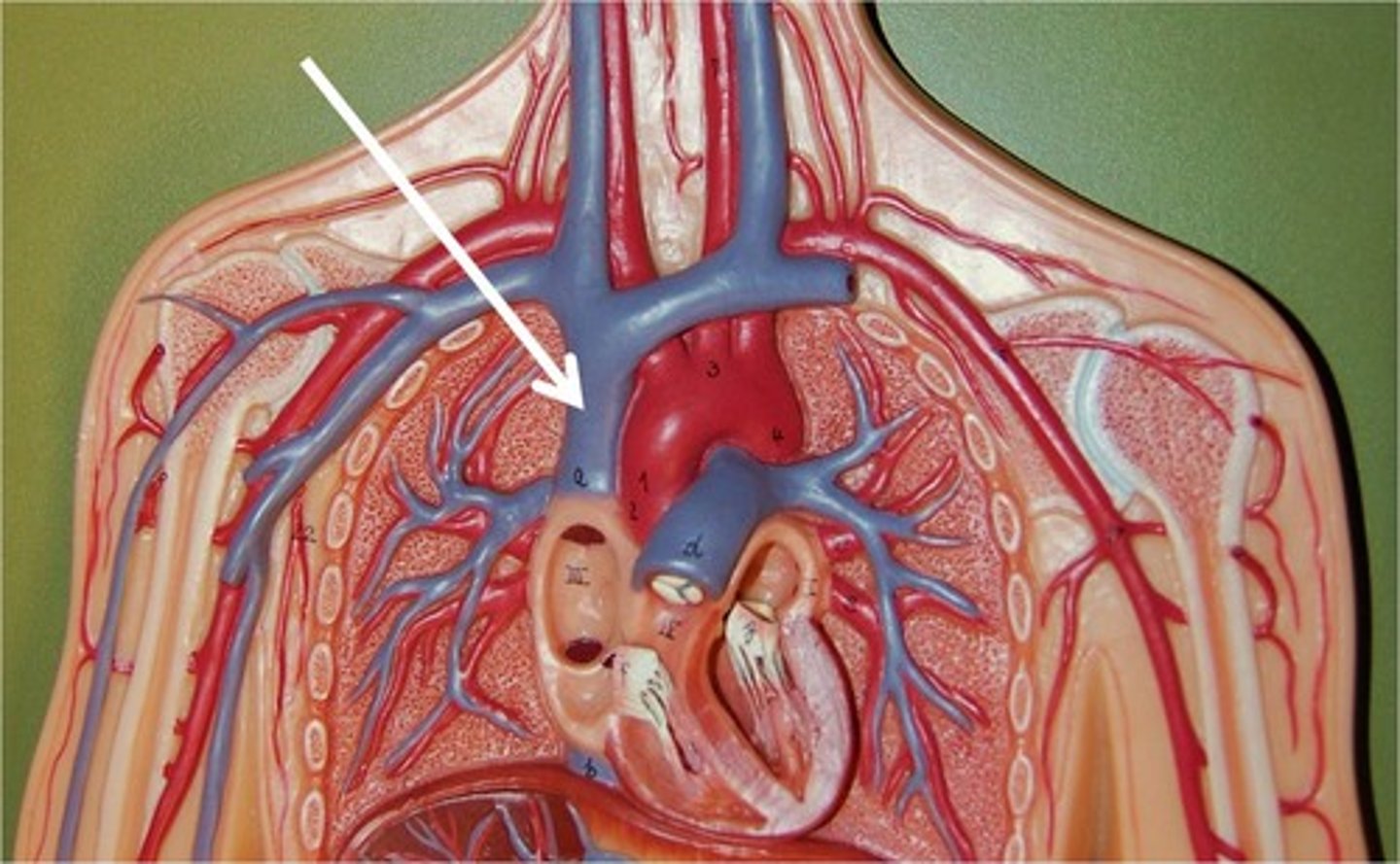
inferior vena cava
receives blood from lower limbs and abdominal organs and empties into the posterior part of the right atrium of the heart
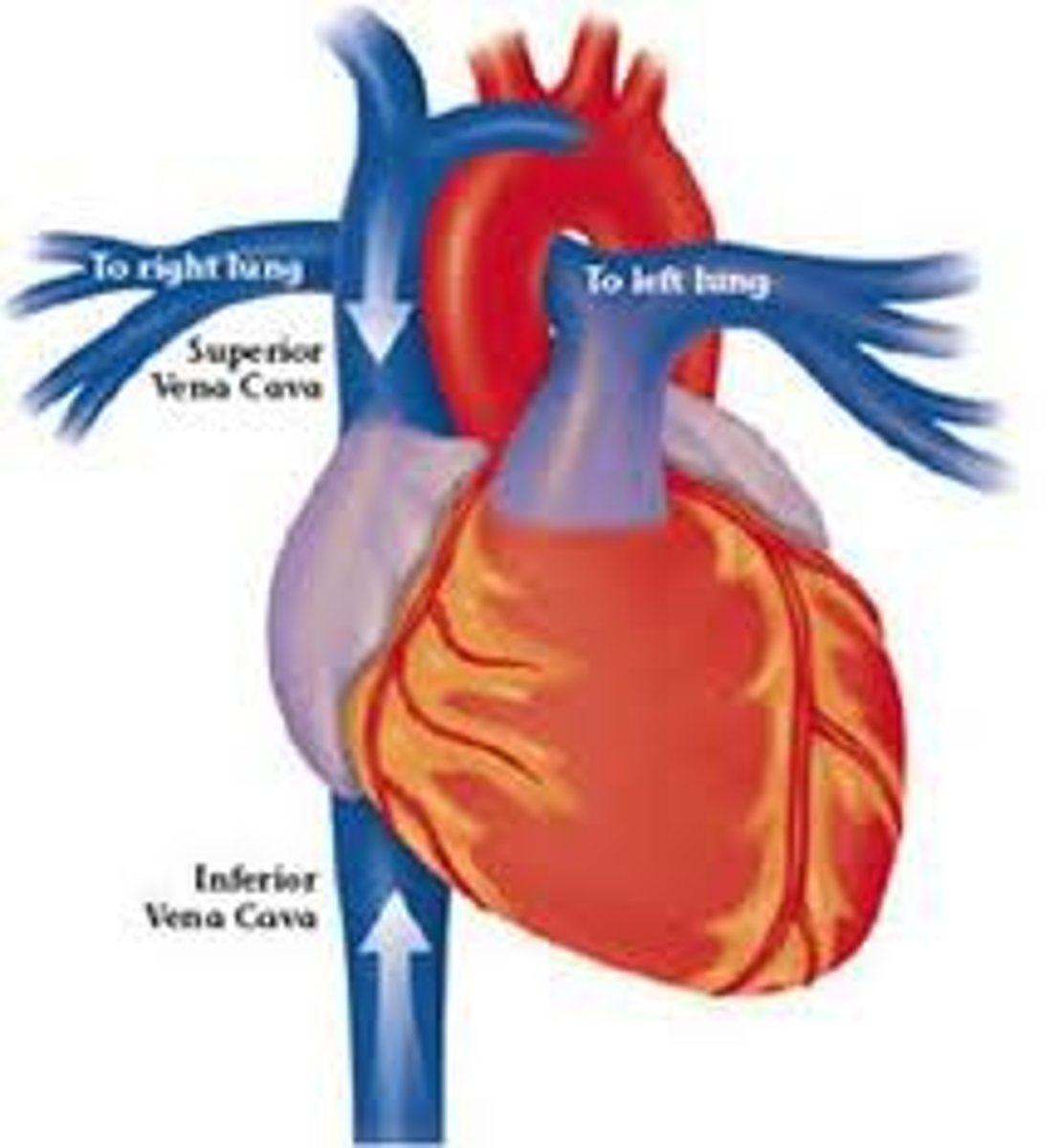
right pulmonary artery
takes oxygen poor blood from the right ventricle to the right lung
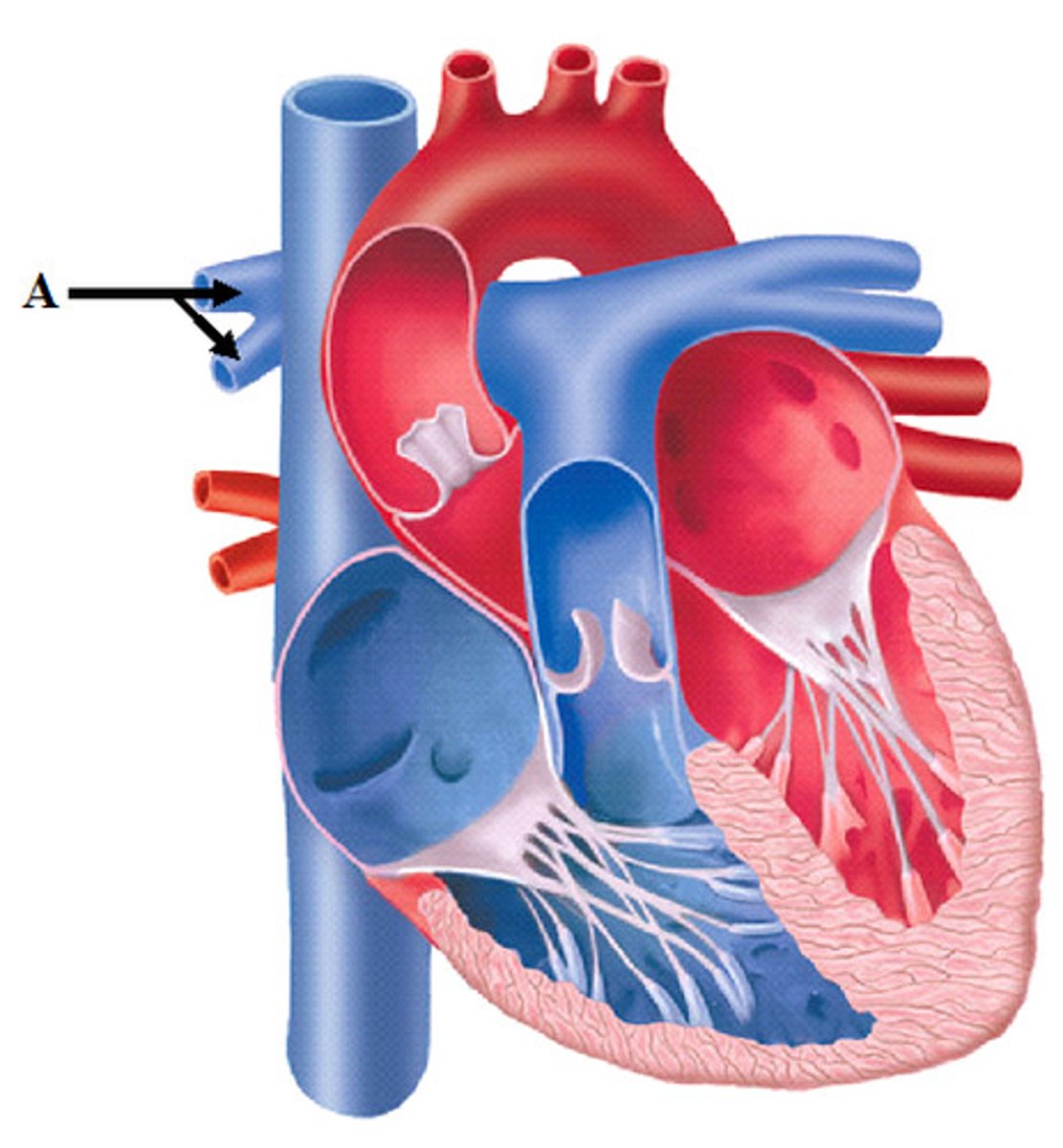
left pulmonary artery
transports oxygen-depleted blood from the right ventricle to the left lung
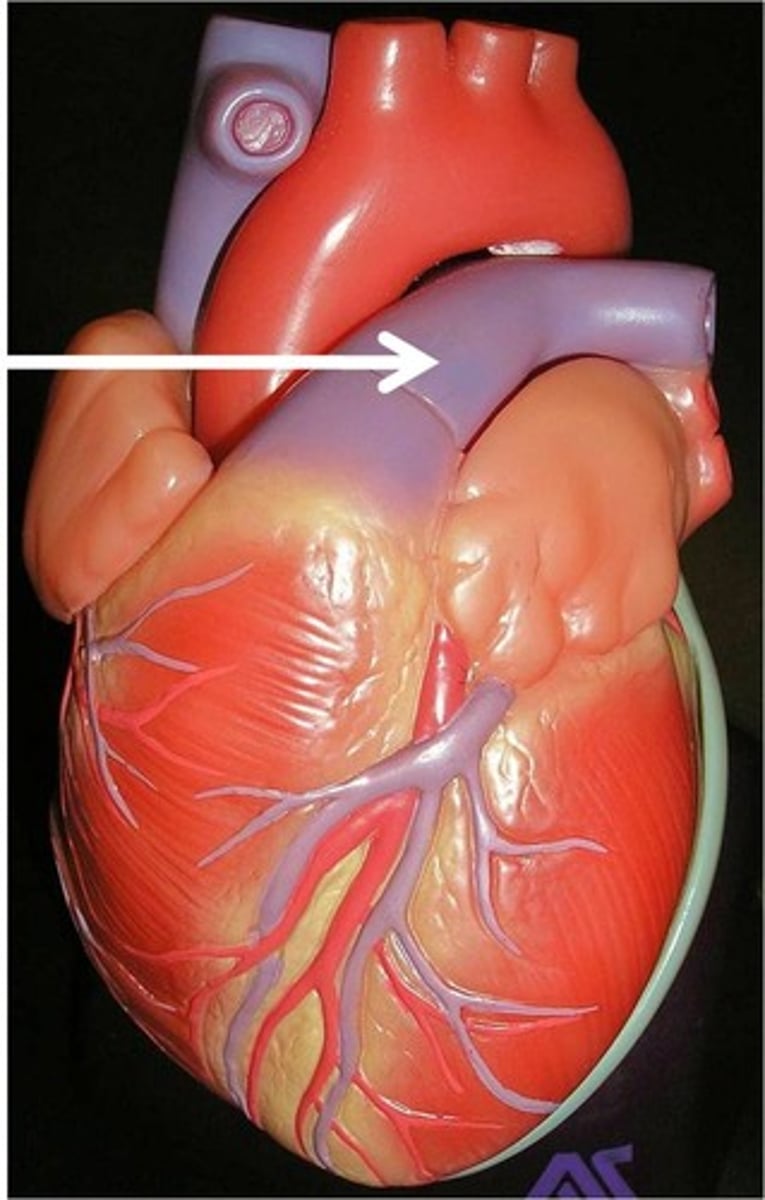
pulmonary veins (4 of them)
carry the oxygenated blood from both lungs into the left atrium of the heart
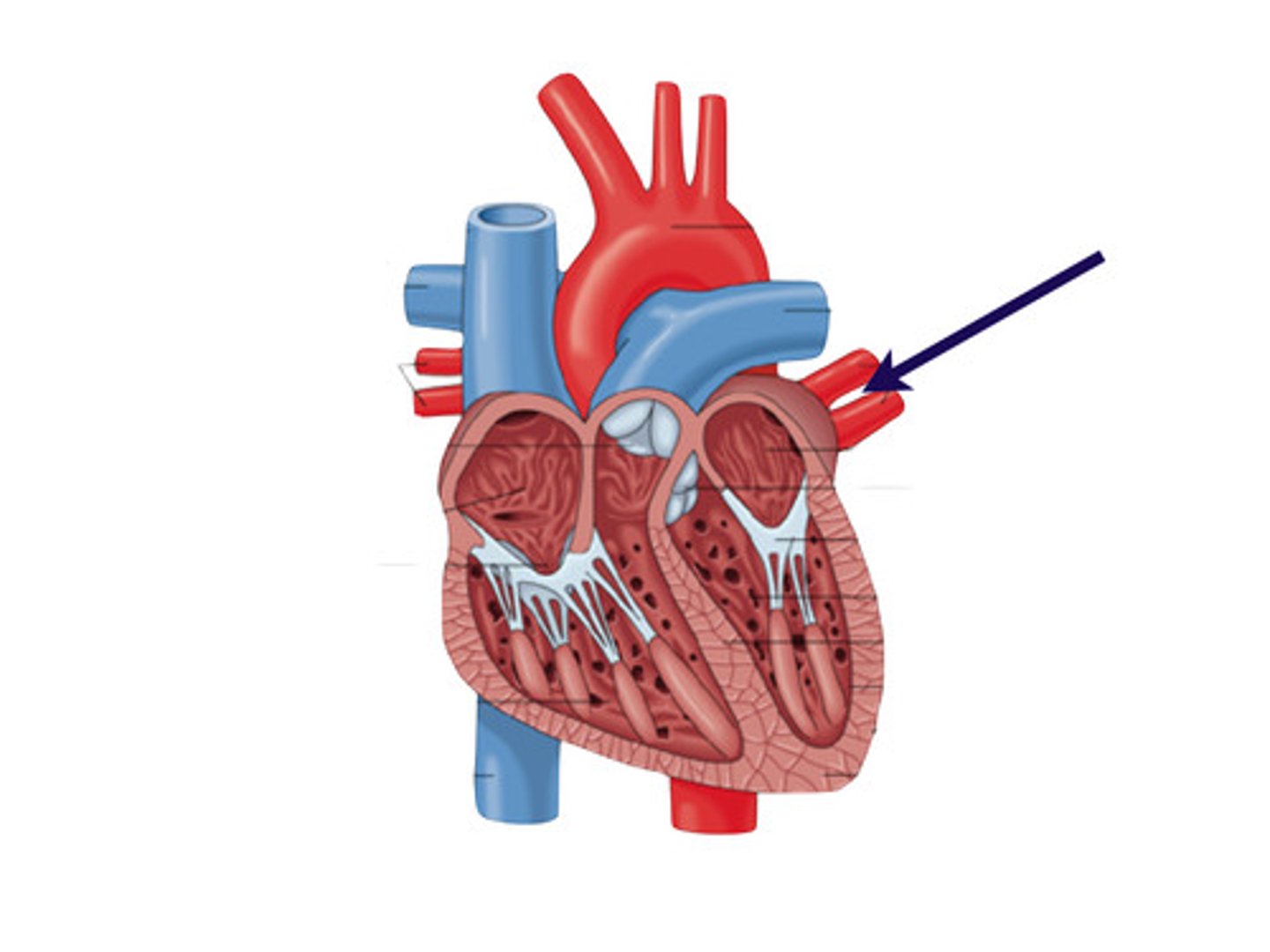
aorta
The large arterial trunk that carries blood from the heart to be distributed by branch arteries through the body.
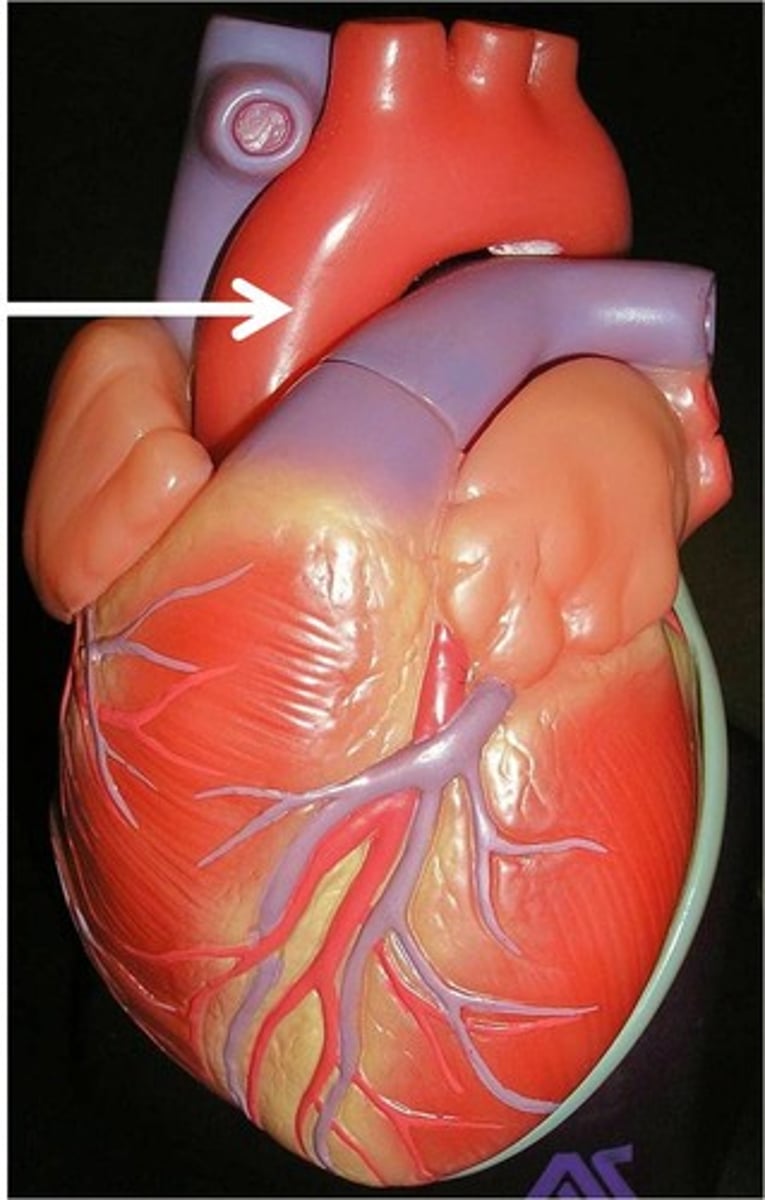
atrioventricular valves (2 types= tricuspid & bicuspid)
Valves located between the atrial and ventricular chambers on each side of the heart, prevent backflow into the atria when the ventricles are contracting.
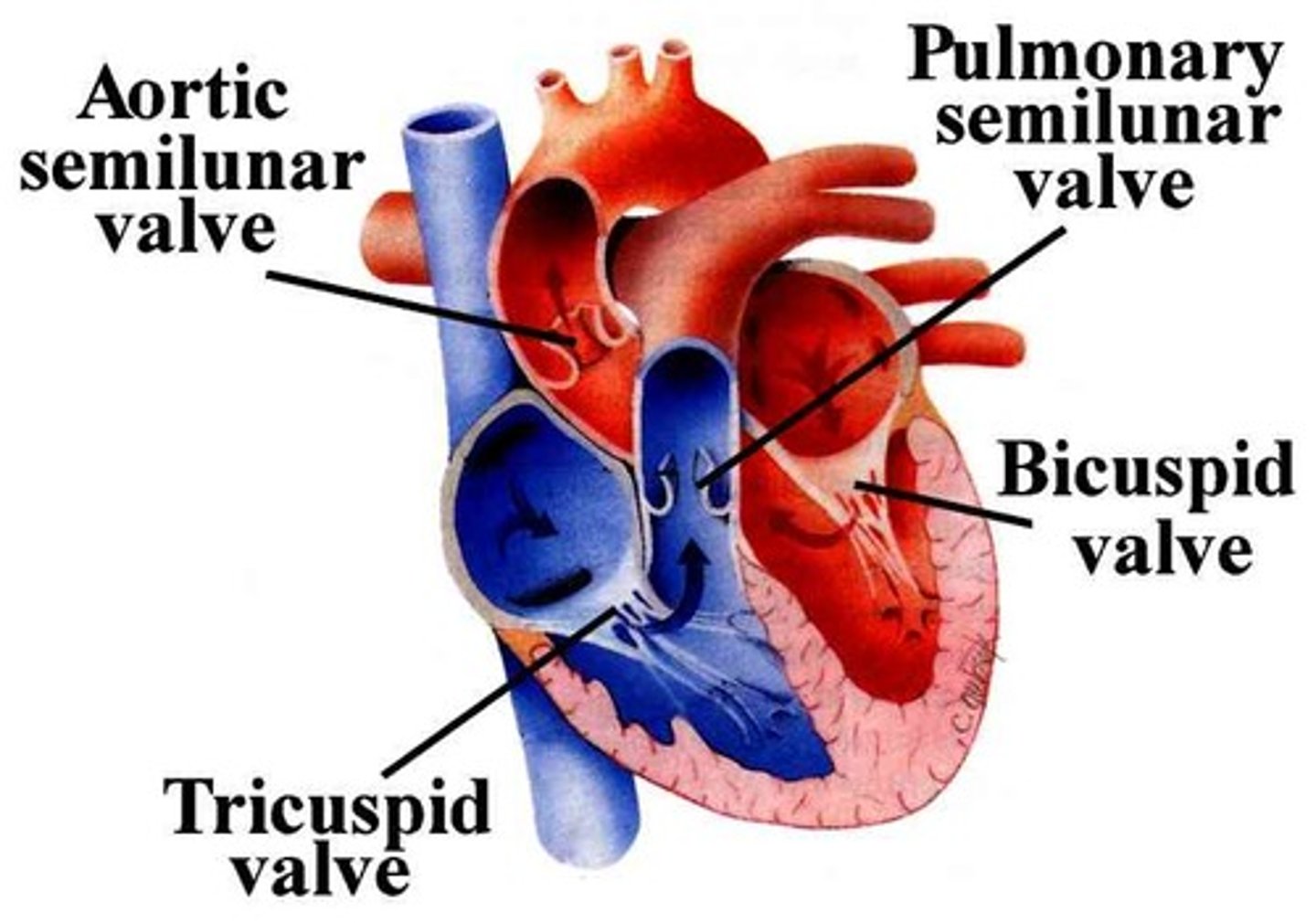
tricuspid valve
valve between the right atrium and the right ventricle
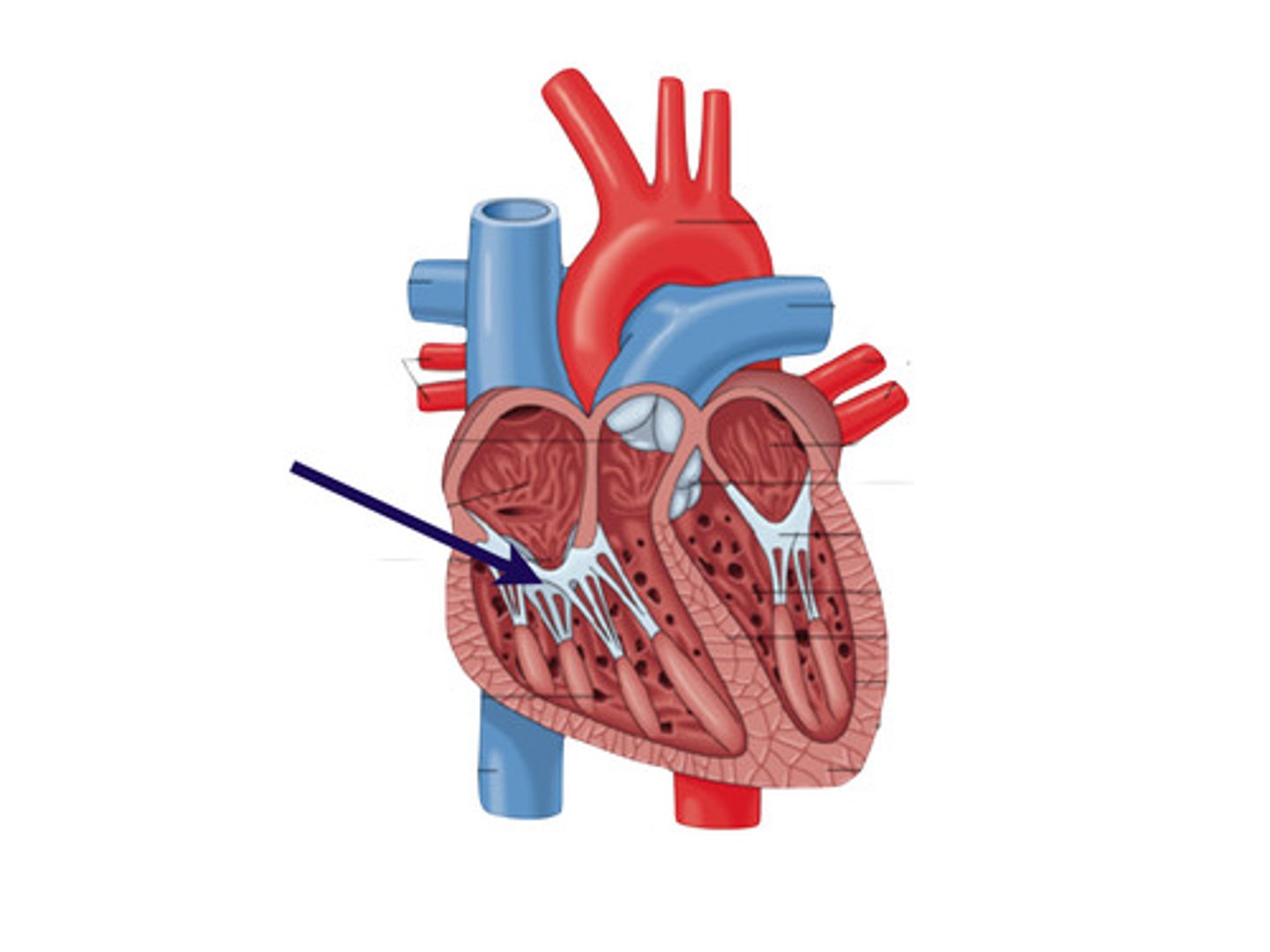
bicuspid valve (also called mitral valve)
valve between the left atrium and the left ventricle.
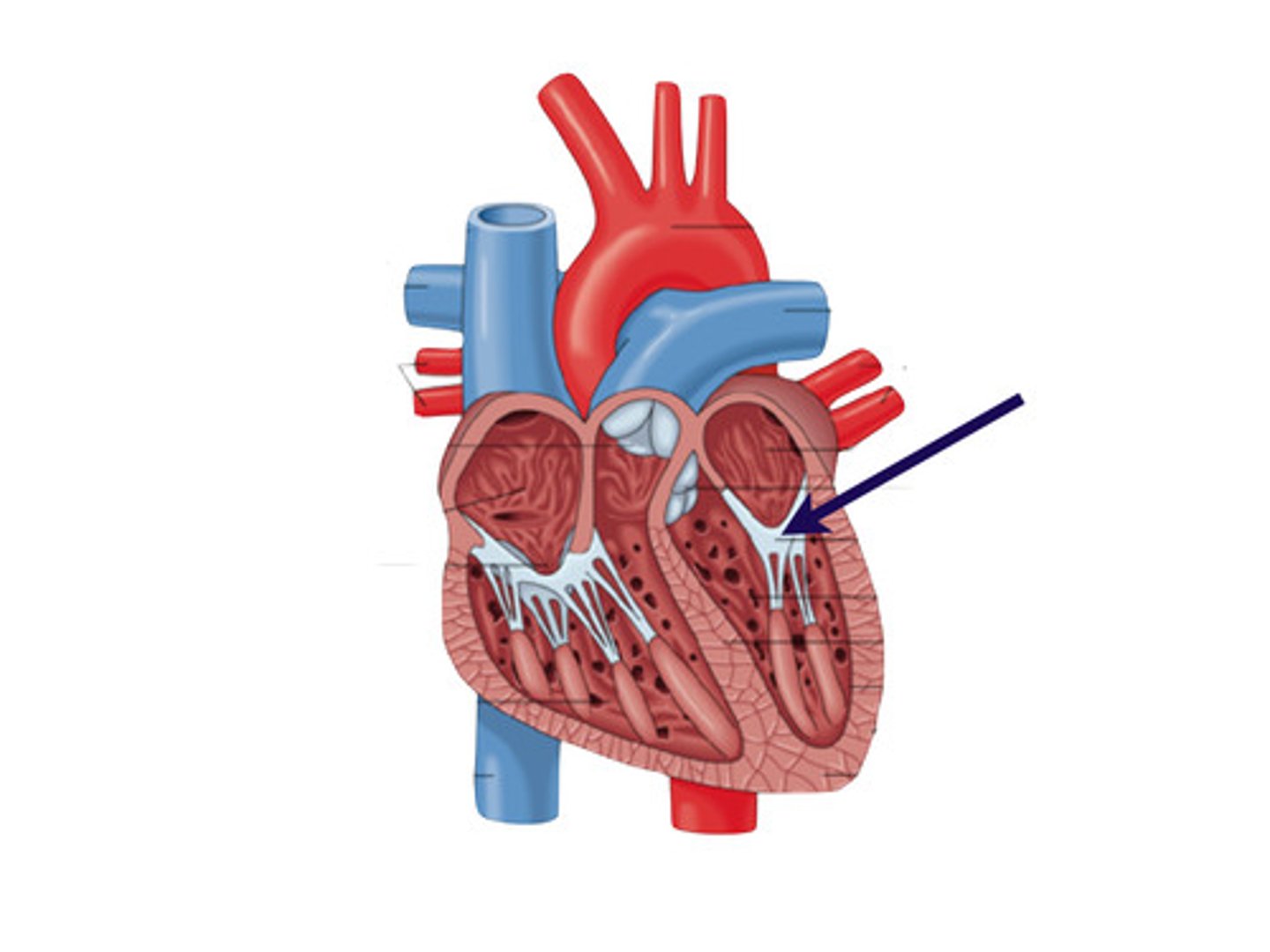
Semilunar valves (2 types =pulmonary & aortic)
pulmonary and aortic valves located between the right ventricle and the pulmonary artery and between the left ventricle and the aorta
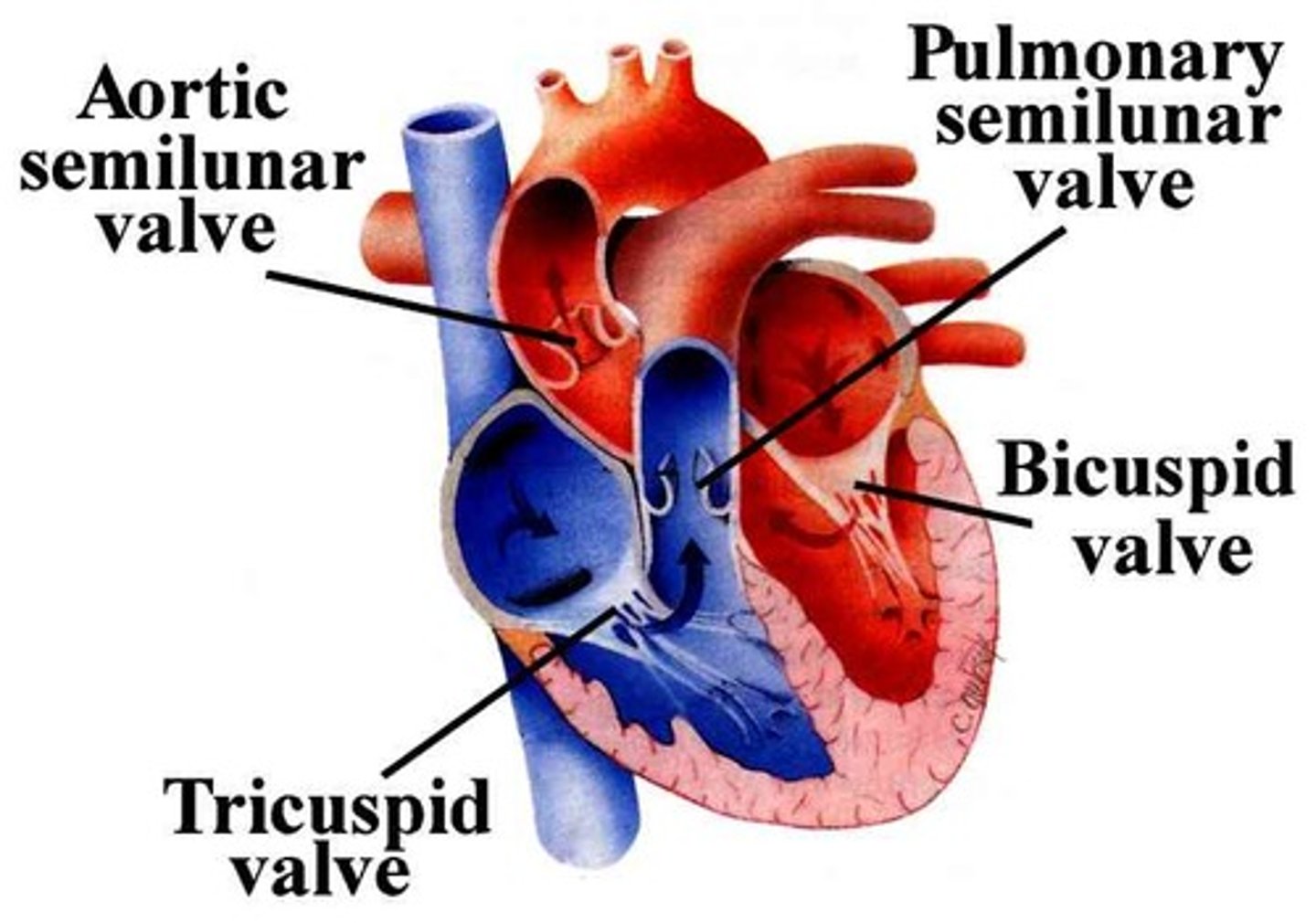
pulmonary valve
valve positioned between the right ventricle and the pulmonary artery
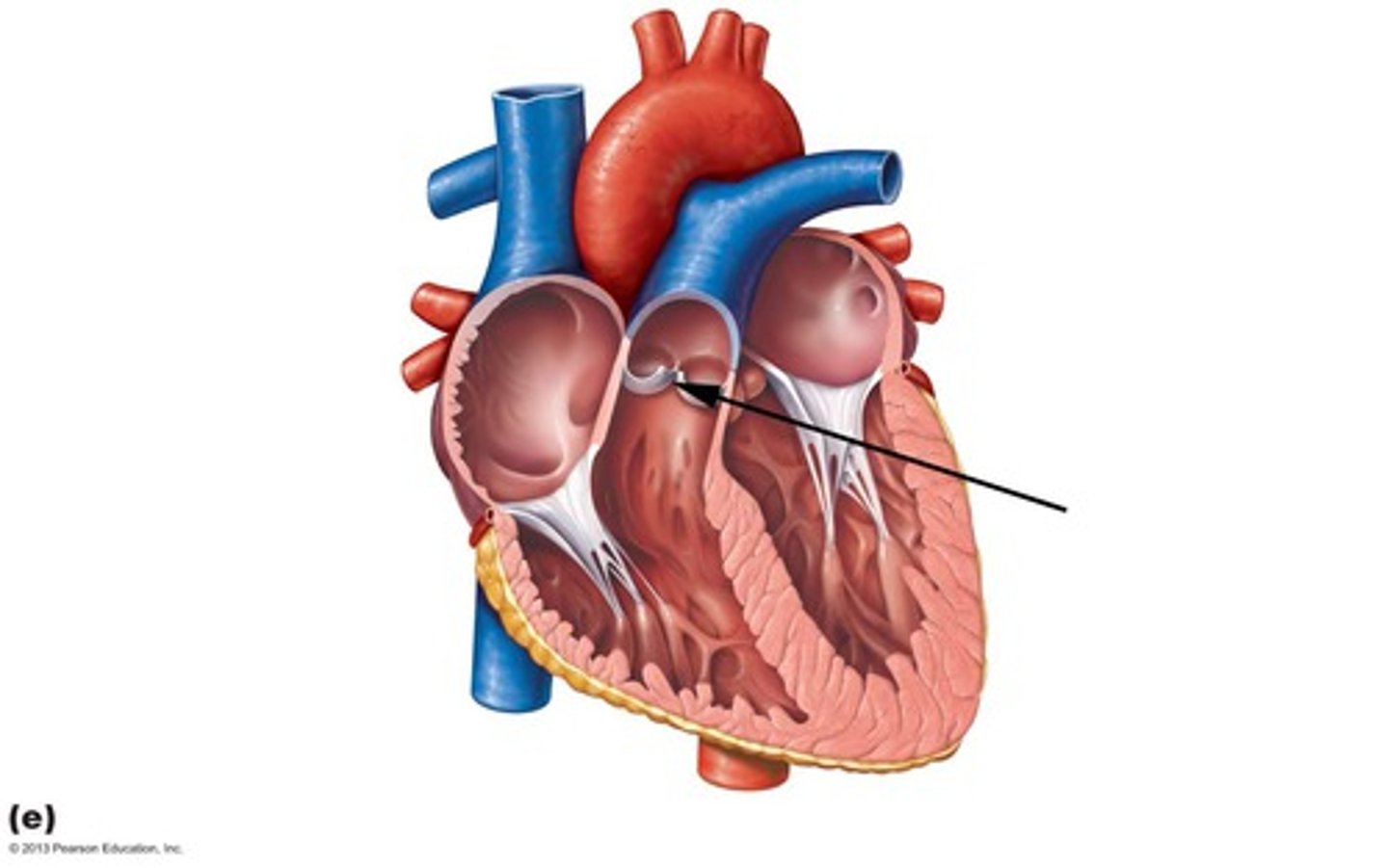
aortic valve
The semilunar valve separating the aorta from the left ventricle that prevents blood from flowing back into the left ventricle.
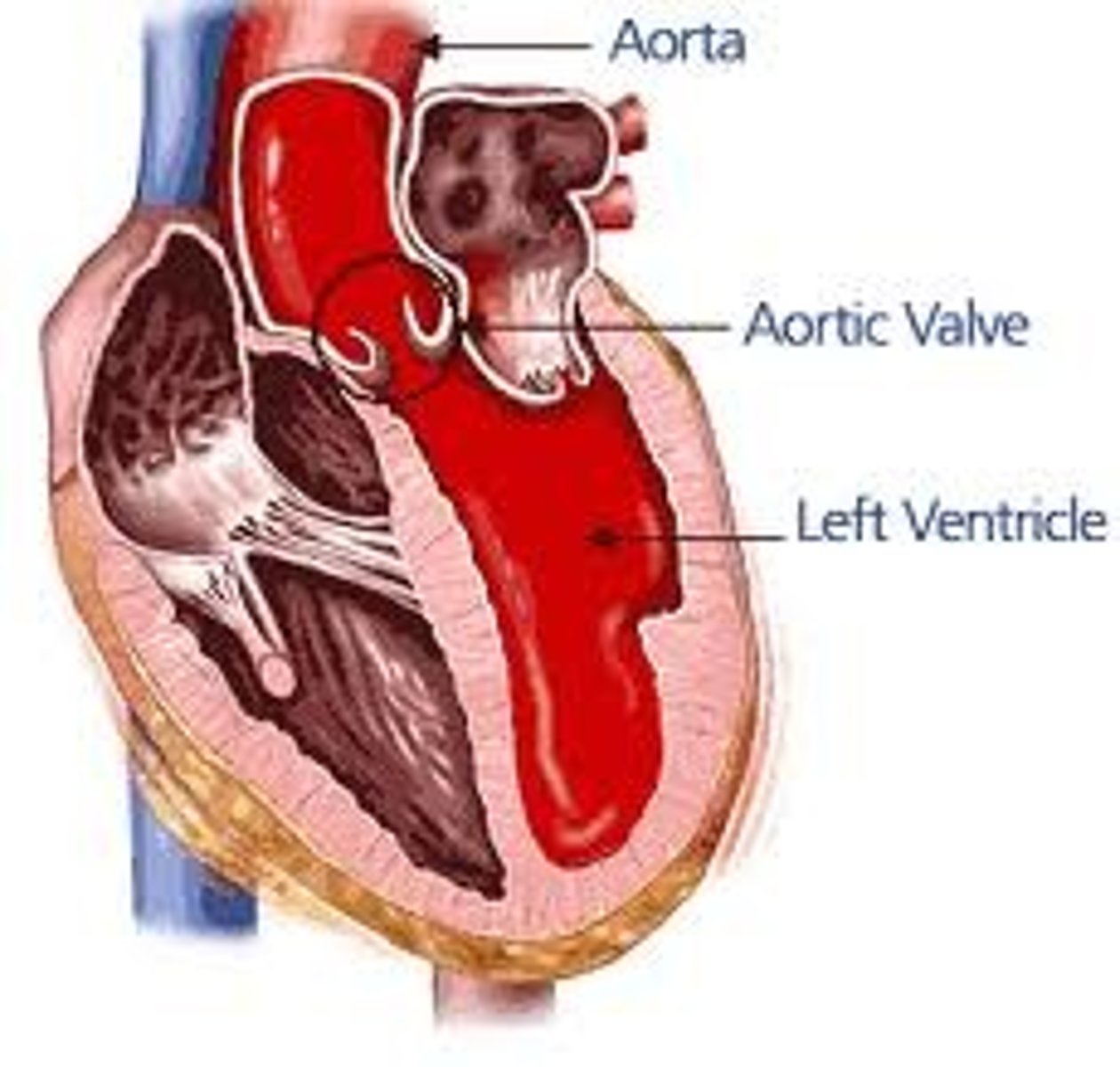
aortic arch
blood vessels located between ascending and descending aortas that deliver blood to most of the upper body
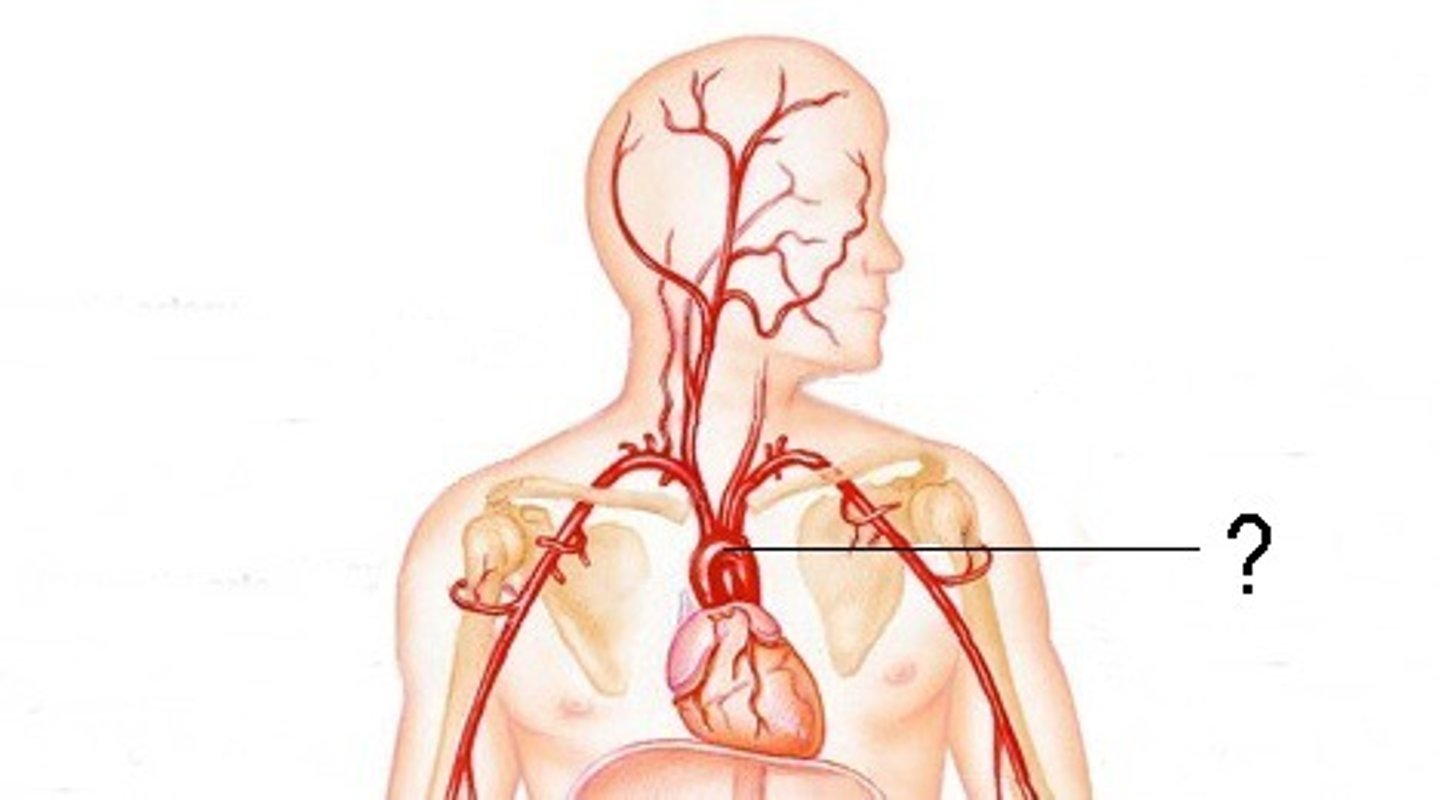
descending aorta
the descending part of the aorta that branches into the thoracic and abdominal aortae
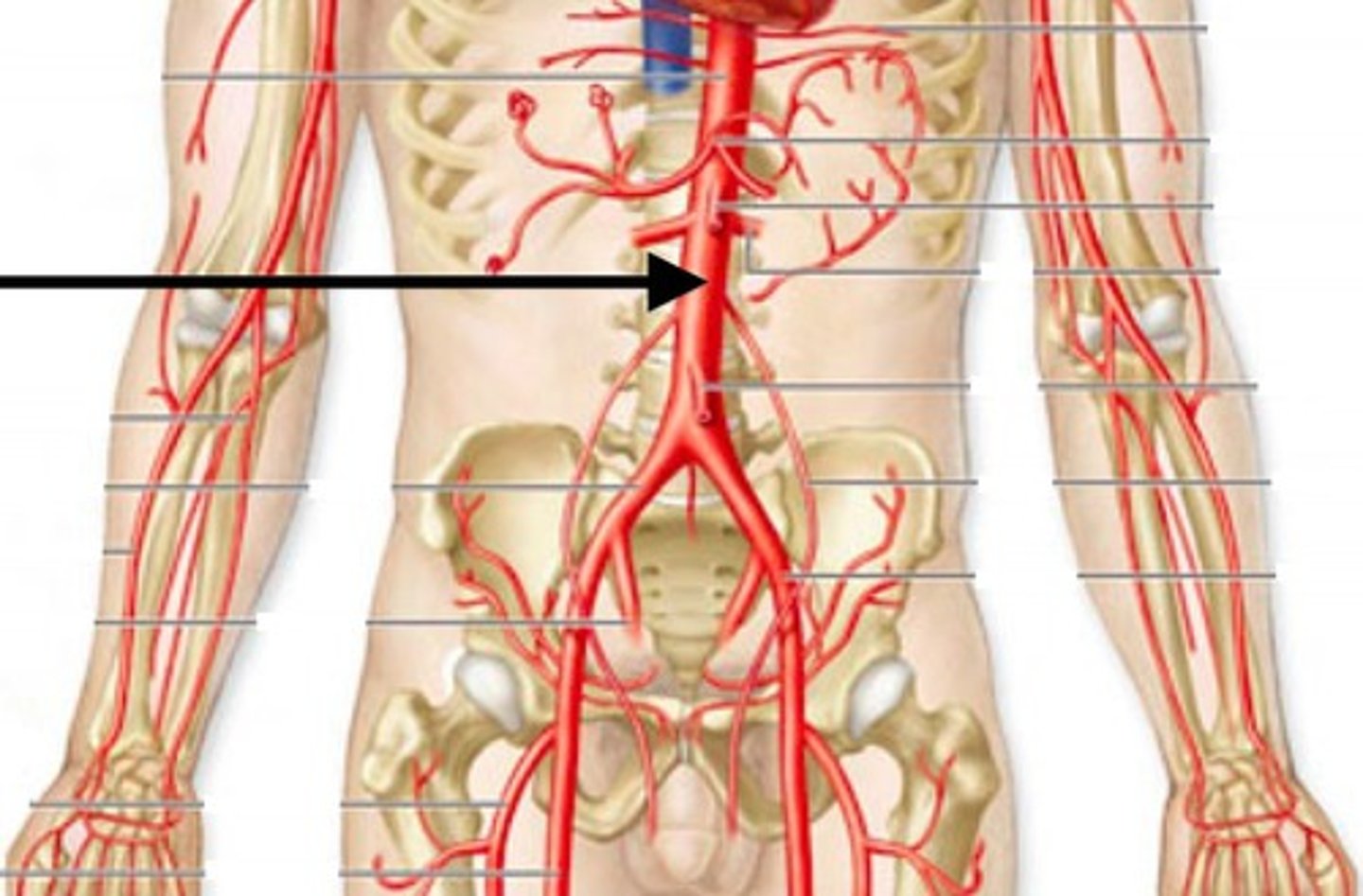
cardiac muscle
Involuntary muscle tissue found only in the heart.

septum
Divides the right and left chambers of the heart
